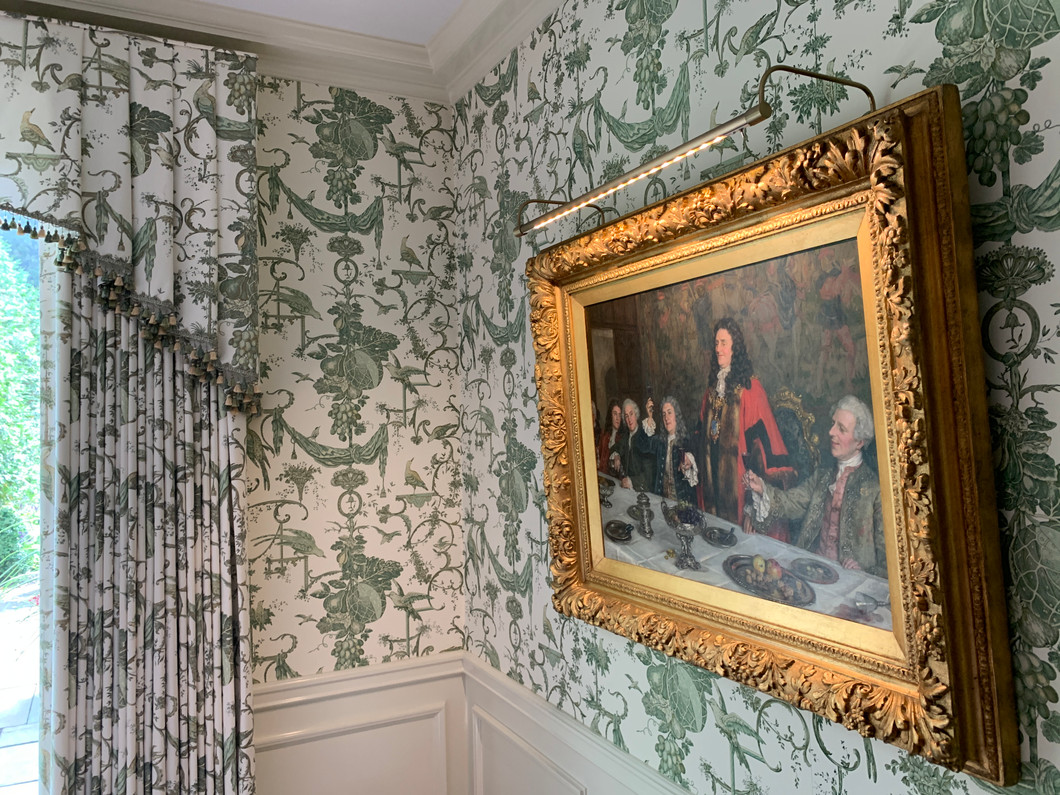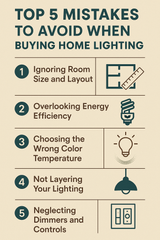Art Lighting: A Guide
Art lighting is an essential element for showcasing artwork in any space. Whether you have a personal art collection or run an art gallery, proper lighting can make a significant difference in how the artwork is perceived. The right lighting can highlight the artwork's details, create mood and ambiance, and even influence the viewer's emotions. In this blog, we will guide you through the different types of art lighting, including track lighting, frame lighting, and recessed lighting, and help you choose the right one for your art collection.
Choosing the Right Art Lighting
- Consider the Artwork The first step in choosing the right art lighting is to consider the artwork itself. Different types of artwork require different lighting. For example, a painting may require different lighting than a sculpture. You should consider the colors, textures, and size of the artwork when choosing the lighting.
- Choose the Right Bulbs The type of bulb you choose can make a big difference in how your artwork is perceived. LED bulbs are a popular choice for art lighting because they provide bright, clear light without emitting heat. They also last longer than traditional incandescent bulbs. However, if you prefer the warm glow of incandescent bulbs, you can choose a lower wattage bulb to minimize heat.
- Decide on Placement The placement of your art lighting is also important. You want to avoid shadows and glare, which can detract from the artwork. Position the lighting so that it is angled slightly away from the artwork to minimize glare. You may also want to consider using multiple light sources to eliminate shadows.
- Hire a Professional If you are unsure about how to properly light your artwork, consider hiring a professional. An experienced lighting designer can help you choose the right lighting and placement for your artwork. They can also help you choose the right bulbs and fixtures.
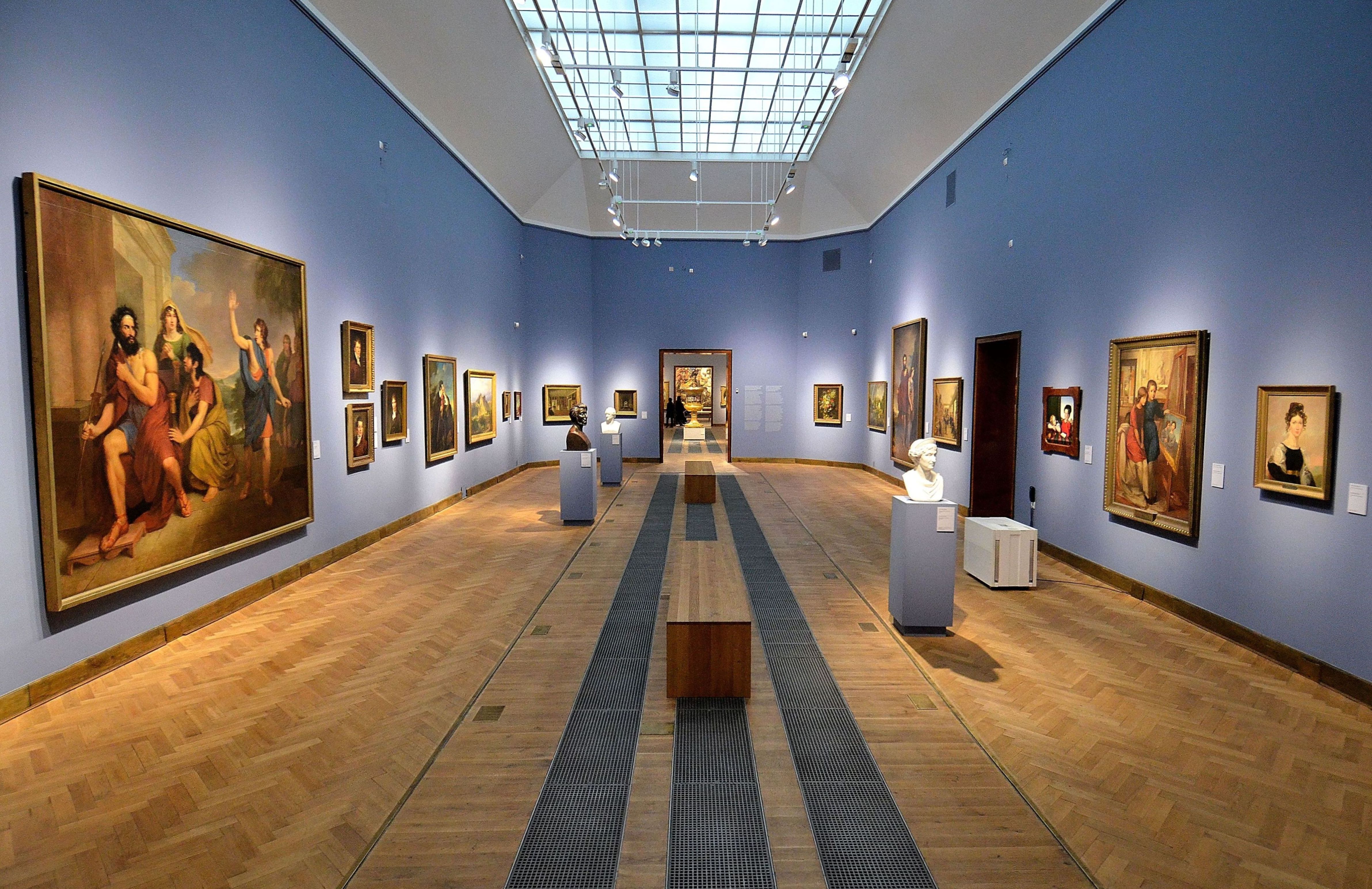
Track lighting at play in the National Museum in Warsaw (Img: Wikipedia)
Track Lighting
Track lighting is a popular choice for art galleries, museums, and even homes. It consists of a track that is mounted on the ceiling or wall, with adjustable light fixtures attached to it. The fixtures can be directed at specific artwork to highlight its details, or they can be aimed at the wall to create a wash of light.
One of the biggest advantages of track lighting is its flexibility. The fixtures can be easily adjusted to direct light exactly where it is needed. This is particularly useful when you have a rotating art collection, and you need to adjust the lighting to accommodate different pieces.
When choosing track lighting, you will need to consider the color temperature of the light. A warm white light (around 2700K) can create a cozy ambiance, while a cool white light (around 4000K) can create a more clinical, museum-like atmosphere. You can also choose between halogen, fluorescent, or LED bulbs, depending on your budget and energy efficiency preferences.
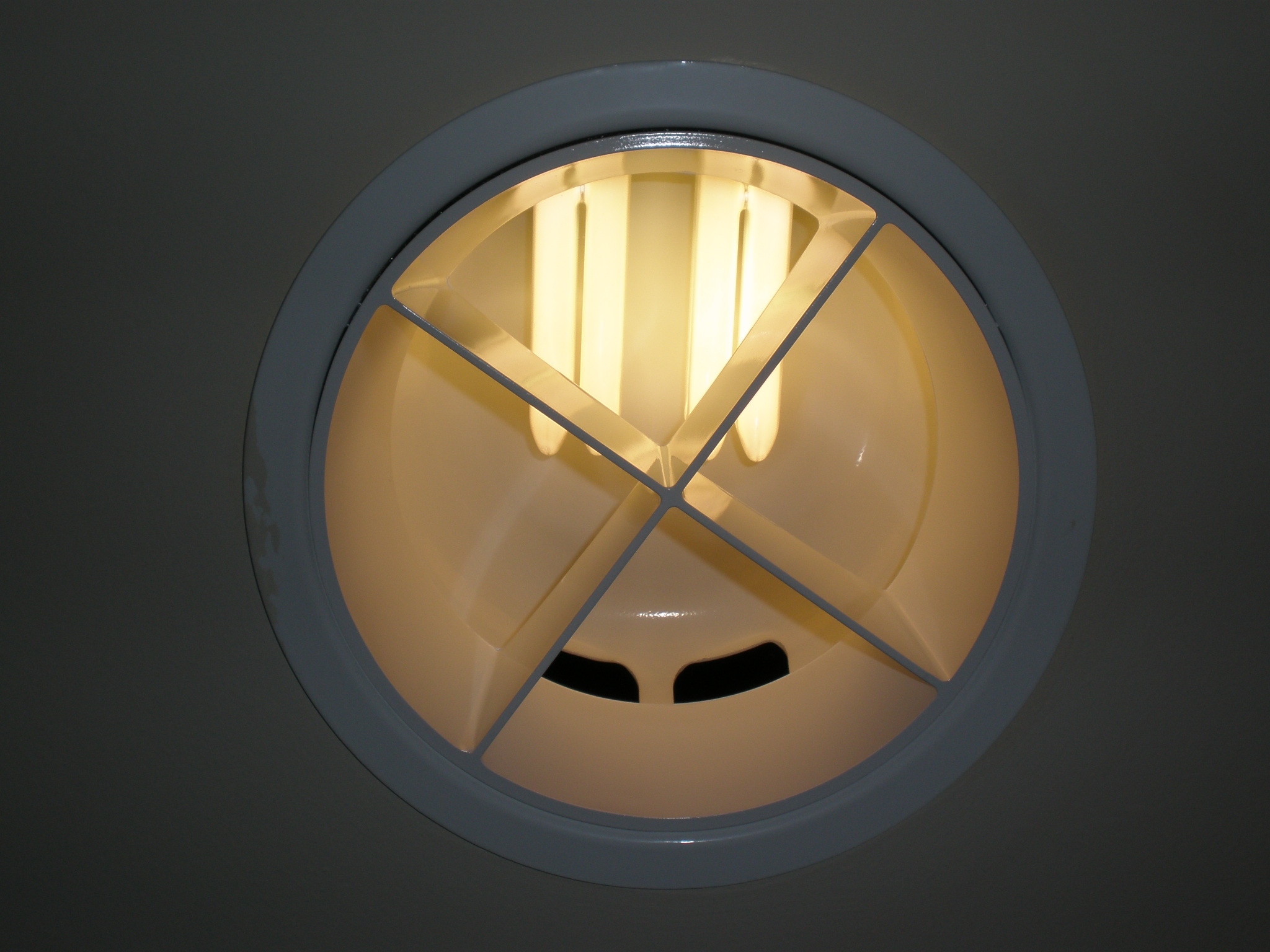
A typical recessed light with a compact fluorescent bulb
Recessed Lighting
Recessed lighting involves installing light fixtures directly into the ceiling or wall, so they are flush with the surface. This creates a clean, minimalist look that can be very effective when highlighting artwork.
Recessed lighting is a good choice for smaller artworks, as the fixtures can be directed precisely where they are needed. They are also ideal for creating a subtle, ambient light that can create a warm and inviting atmosphere in a room.
When choosing recessed lighting, you will need to consider the type of bulb you use. LED bulbs are a popular choice as they are energy-efficient and have a long lifespan. You can also choose between warm white and cool white bulbs to create the desired ambiance.
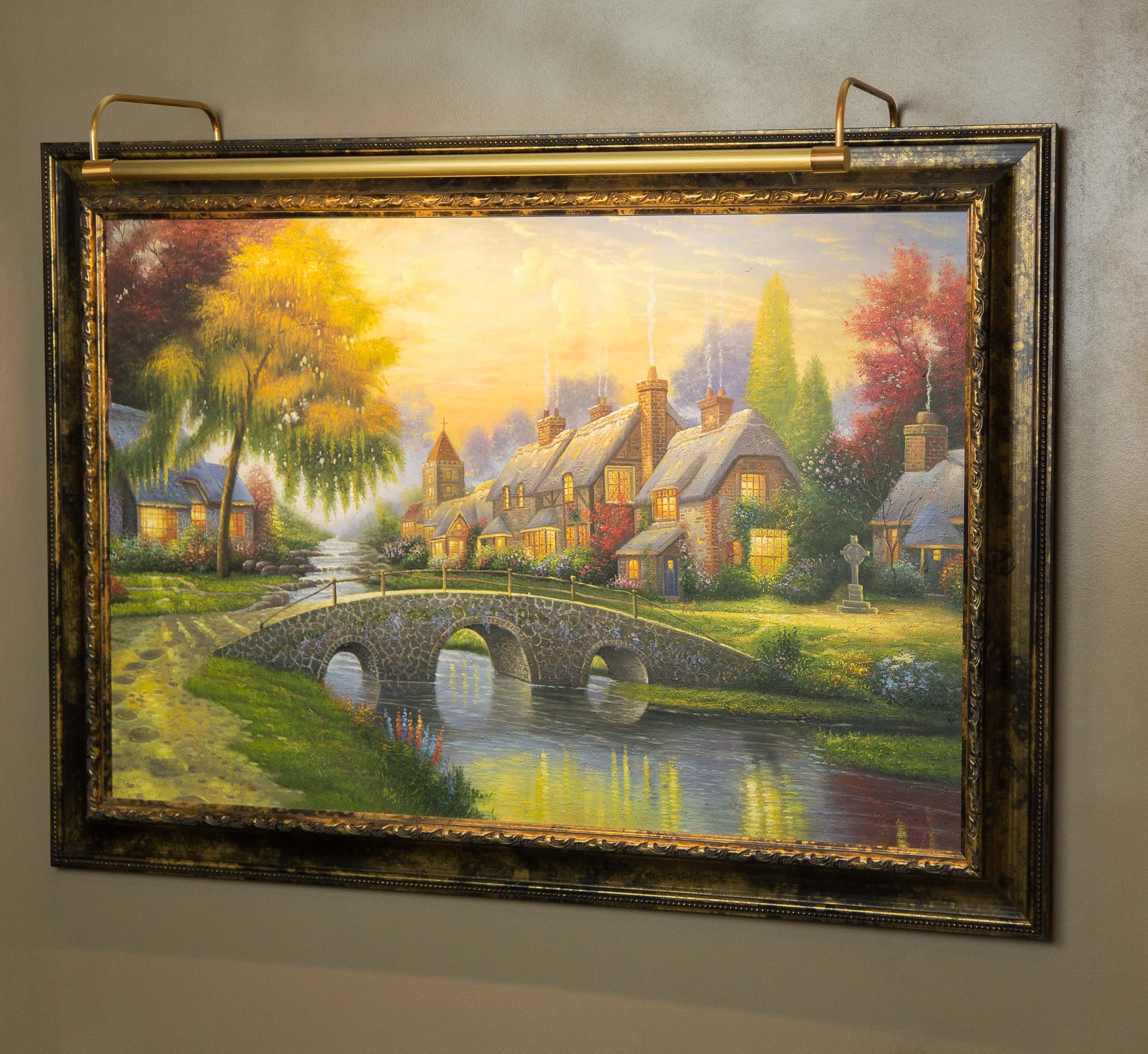
An over-the-frame picture light done in modern style
Frame Lighting
Frame lighting generally is the all-in-one solution to individualized art lighting: the light is placed directly upon a painting’s frame, or other mounted as close as possible to the piece which it illuminates. This provides an illumination that’s perfectly tailored to a given piece of artwork—the light essentially becomes a part of the display.
Frame lighting is particularly useful when you have large, rectangular artworks that are difficult to light evenly with track lighting.
The only downside is that a single piece can only be equipped by a single frame light, as multiple lights would overlap and provide an uneven illumination. Higher-end art lights, however, come multiple sizes to best suit artwork of any length. As the light is so close to the art, however, when utilizing a frame light you should be cautious of lights with high heat: incandescent and halogen bulbs run hot, so cooler solutions such as LED lighting bulbs are the way to go.
In Conclusion, choosing the right art lighting can be challenging, but it is an essential element for showcasing artwork in any space. Whether you choose track lighting, frame lighting, or recessed lighting, the key is to create an ambiance that highlights the artwork's details and creates a mood that enhances the viewer's experience. Consider the size of your artworks, the color temperature of the light, and the type of bulb you use to create the desired effect. With the right lighting, your art collection can truly shine.
Recent Posts
-
Top 5 Mistakes to Avoid When Buying Home Lighting
Lighting plays a crucial role in shaping the ambiance, functionality, and aesthetic appeal of your h …26th Jun 2025 -
Why Lighting Is the Most Underrated Design Element in a Room
Walk into a well-designed space, and you might first notice the color of the walls, the statement fu …13th May 2025 -
How to Choose the Perfect Painting for Your Home or Office
When it comes to decorating your space, choosing the perfect painting can be a game-changer. A well- …7th Feb 2025

